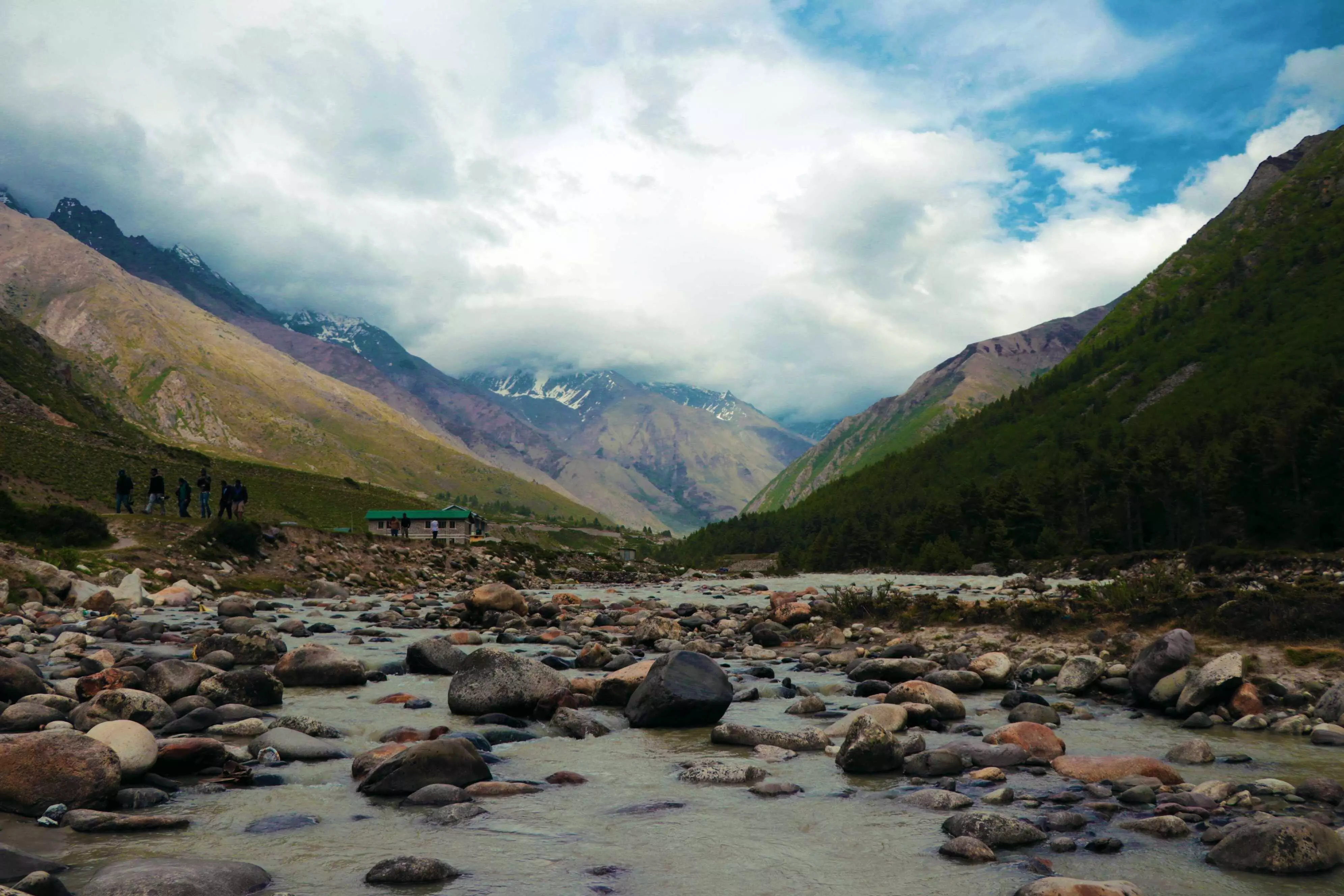Talking Shop: India’s last village
Nestled in the Himalayas next to the country’s border with Tibet, Chhitkul is at India’s very skirt-edge. It is pristine, beautiful and still in danger from mankind

“I see every person as a
mountain of sorts; we can
see how they look from
afar, but will never know
them until we explore.”
―Anonymous
Just the other day, I was watching a video on the Internet, much as I often do and I stumbled across a blissful mountain village in the far edge of our country, Chhitkul. Nestled in the Himalayas on the Indian border with Tibet, Chhitkul is at the skirt-edge of our country and is our last village on the Hindustan-Tibet Road. It is pristine, beautiful and in terrible peril—from humans, especially as we begin discovering this wondrous valley and start visiting this locale with our plastic bottles and trashy paraphernalia. The mountainside is dotted with pine and fir trees thick enough to put the denseness of the Amazon rain forests to shame and the village boasts of bucolic wooden houses and raw, rustic heritage, and yes, air quality that is India’s cleanest; 30 times cleaner than in Delhi-NCR.
Why am I writing an Opinion Piece on a remote Himalayan village this Monday morning, you ask? Well, because it deserves more than a casual mention and because I have seen enough mountains and hill stations falling prey to the wrath of man. Just 30 years back, Manali, Leh, Nainital and Shimla were as beautiful, serene and tranquil as Chhitkul is. Then, we masses pounced on these places, cut down the trees to make way for homes, hotels and other requisite infrastructure, dammed up the rivers for electric power needed for the thousands who descended upon these mountainsides and turned it into the ugly mess that they are today. Look at what is happening in the higher Himalayas, in Uttarakhand, Kasol and Manali, where landslides, cloudbursts and incessant rain have washed away entire mountainsides and cost massive loss of lives, property and infrastructure. Lack of planning and haphazard building practices have wrought havoc and mayhem.
Celebrating Chhitkul
In Himachal Pradesh’s Kinnaur district is situated the lovely Sangla Valley and at its very edge lies Chhitkul village, which boasts India’s last Post Office. At an altitude of 11,000 feet, Chhitkul has the cleanest air quality in the country, as per studies conducted by IIT Delhi. The clean air is not here because of the remoteness of the village, but also due to the dense forests that grace the Sangla Valley. The pine and deodar (Himalayan cedar) forests pump in new life into this area each day and are a critical reason for the very existence of this village, with houses made of wood from these same trees. But let not the old wooden structures lead you to believe that Chhitkul is backward and behind the technology rush—most houses sport solar panels for green power generation and are adorned by dish antennas for capturing the latest soaps and news.
While on technology, particularly fascinating is Chhitkul’s ‘gharat’ (hydro-powered chakki [mill]) for grinding wheat into ‘aata’ (flour) and other edible cereals. This naturally-powered ‘gharat’ uses gushing glacial water diverted to a turbine that spins under this influence, in turn rotating an earthen grinding stone connected to it. A strategically-placed cone-shaped receptacle slowly dispenses wheat and other cereals onto the grinding stone and flour is ready for whatever chooses the fancy. Every house here has a small wooden structure outside the living area, which stores all things edible for families that stay through the harsh winter, when the entire region is snow-bound and cut off from the rest of the country for as long as six months. Some go the Rakshham, just 10 kilometers away down South, but all stand proud right in the middle of the village with the charming Chhitkul Fort, its walls made of wood and roof of slate.
Cause for worry
Paradoxically, it is Chhitkul’s age-old beauty and present-day rusticity that is cause for worry, causing concerns that it may go the way of other once-bucolic hilly townships. Let’s take Leh, the latest to fall prey to so-called development and commercial advancement. This hard-to-reach old-school town barely had tourists till as recently as a decade ago, with less than 100 hotels and barely 1,000 visitors a year, most of them foreigners. It was clean, near-underdeveloped and remote. The air was clean, the water good enough to drink from the source itself and there was next to no traffic, pollution and plastics.
Then Aamir Khan decided to star in a super-hit film 3 Idiots with its famous last scene shot at Pangong Tso (lake) and the devil came to roost. Some applaud and give credit to Bollywood for bringing this magical destination to every traveller's map, but it is just a thin line that we cross to make a heavenly destination lose its essence completely. Today, there are frequent traffic jams on the road from Leh to Manali, with bikes being rented got travel to Pangong Lake. The basic question is how many more years do we need as a developing nation to realize the basic concept of sustainable tourism? We are lucky enough to be surrounded by fragile ecosystems that remained hidden and a sudden boom in tourism and V-logging makes them open for exploitation without any checks and balances. We are deplorable, as evidenced by the haphazard and unsustainable development in newly-discovered tourist areas. Why do we need 10 similar ‘3 Idiots Cafes’ on the lake bed? Now, Leh now has over a 1,000 hotels, traffic snarls, acute water crisis, dumps of garbage causing environmental panic as lakhs of tourists visit annually.
What’s the solution?
We have seen Kasol change from a quaint Himalayan town to a hub of the drug mafia. There are traffic jams at Manali’s Rohtang Pass due to the touristy chaos now. Nainital’s erstwhile tennis court has become a parking lot, with most hotels in ‘hill-station’ Mussoorie now sporting ceiling fans and air-conditioners as weather systems turn on their head. I will not elaborate on Shimla, once a peach in the eyes of the Britishers, which is now reduced to a shanty-filled marketplace with human traffic jams of gangly idiots on its once charming Mall Road. What’s disturbing is that all these changes are absolutely irreversible.
What is needed is planning, stern implementation and policing of plans, responsible tourism, education of visitors and the imposition of stringent fines. Then and only then shall we begin to maintain the blessings of the natural resources that we have been blessed with. John Muir once said: “Thousands of tired, nerve-shaken, over-civilized people are beginning to find out (that) going to the mountains is going home; that wilderness is a necessity.” Muir was right, but he was perhaps not very well-versed with our lethal Indian propensity to turn natural wilderness into a raucous and ugly place, with once beautiful mountains fast turned into mounds of waste and garbage.
The writer is a veteran journalist and communications specialist. He can be reached on [email protected]. Views expressed are personal



